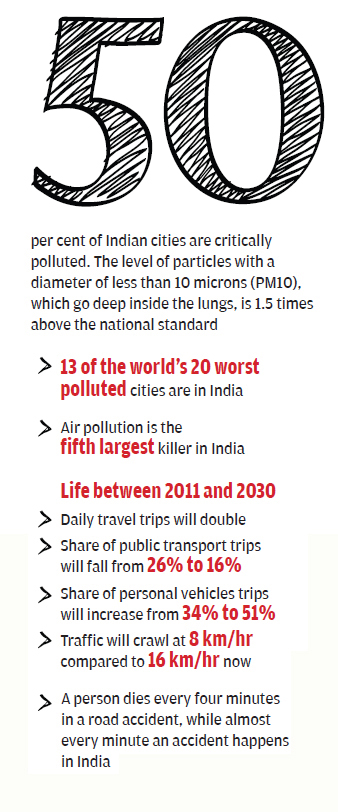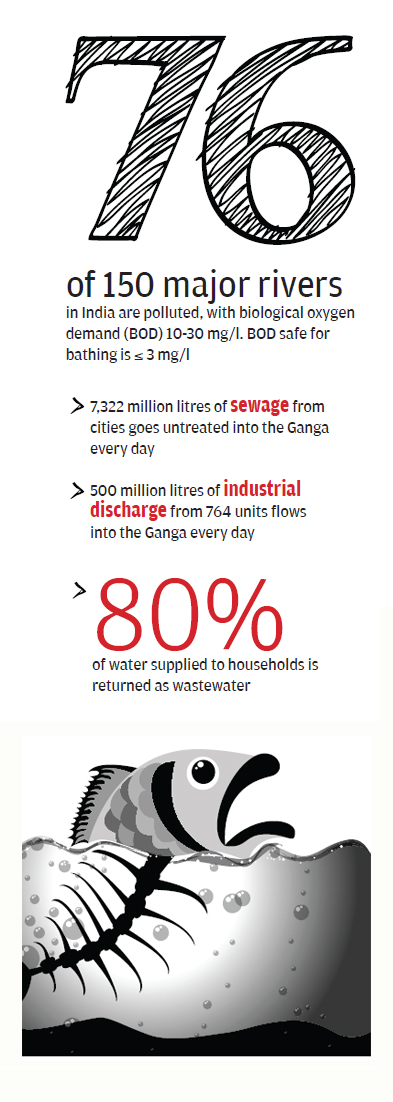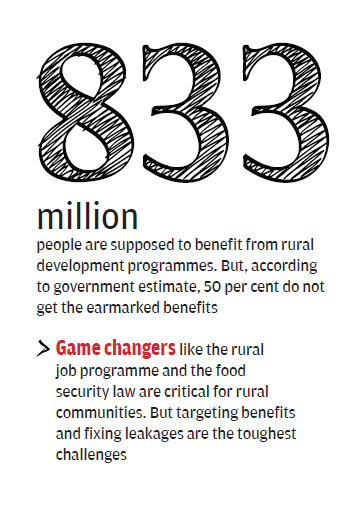Mr Modi, Wish us a Happy Environment Day
Sunita Narain
 EVERY NEW GOVERNMENT comes with baggage and opportunity. The problem is since the government is new, it wants to undo what has been done in the past, make new schemes and start again on the learning curve. The opportunity is that there is a new drive to do
more, to deliver and to push for change.
EVERY NEW GOVERNMENT comes with baggage and opportunity. The problem is since the government is new, it wants to undo what has been done in the past, make new schemes and start again on the learning curve. The opportunity is that there is a new drive to do
more, to deliver and to push for change.
Keeping these two facts in mind, we are presenting the Environment and Development Agenda for the BJP government that took charge on May 26, 2014, ahead of the World Environment Day.
First, what we do not want the new government to do. One, in the name of development it must not brush aside the idea that the environment, forest and wildlife concerns are critical. This does not mean we believe the current environment and forest clearance system is working. We want a drastic reform of the system so that it works for environmental protection. This requires reducing multiplicity of clearances, removing archaic laws and strengthening regulatory processes. The new government must not be bullied by the Supreme Court into creating an additional environmental regulator. This will only add to the institutional mess.
Two, we do not want the new government to discard old schemes which were introduced for inclusive growth. All the schemes for rural employment, water and sanitation, housing, nutrition and education are crucial. Without these, there is no idea of India.
But again, we want a change. We want delivery so that people have access to clean water, sanitation, employment, food and education. We have lost too much time making schemes on paper and then fiddling to make them even better, without ever focusing on delivery.
It is our belief that delivery requires good old-fashioned governance systems, which need constant monitoring and attention to detail. The delivery of schemes does require states to get more autonomy and control over funds and programme design. In the current system the Centre makes the plan, provides the money, but it is the state that has to operationalise the system of implementation. There is a huge disconnect. It is the state chief minister who should be accountable for delivery; it is he or she who should get the brickbats or the credit.
It is also our belief that people's aspirations have changed. They want more. They should get more. They should not be short-changed, once again, in the name of development, which benefits only some.
The new prime minister has famously and rightly said that toilets are more important than temples. This is the real agenda for the new government.
 JUST AS the Bharatiya Janata Party was getting ready to form the new government, India hit an all time low on the WHO list of polluted cities. Its report, released in May, noted that 13 of the 20 worst polluted cities across the world are in India. Air pollution has also emerged as the fifth largest killer in the country. Though shocking, the findings do not come as a surprise.
JUST AS the Bharatiya Janata Party was getting ready to form the new government, India hit an all time low on the WHO list of polluted cities. Its report, released in May, noted that 13 of the 20 worst polluted cities across the world are in India. Air pollution has also emerged as the fifth largest killer in the country. Though shocking, the findings do not come as a surprise. THE BJP-LED government has said it is serious about cleaning the Ganga. It must know that every river in India is like the Ganga. Every river is either dying or already dead. This is because cities take water from them and return sewage, and industries discharge effluents into them.
THE BJP-LED government has said it is serious about cleaning the Ganga. It must know that every river in India is like the Ganga. Every river is either dying or already dead. This is because cities take water from them and return sewage, and industries discharge effluents into them. ON MAY 16, as India was anticipating a new government the stock market hit a record high. The unbridled optimism of industry that the BJP-led government will rev up the economy is apparent. The Associated Chambers of Commerce and Industry of India has already prepared an agenda for the new government to achieve 10 per cent economic growth. Chandrajit Banerjee, director-general of the Confede- ration of Indian Industry, indicated in an article that the government should re-start stalled projects.
ON MAY 16, as India was anticipating a new government the stock market hit a record high. The unbridled optimism of industry that the BJP-led government will rev up the economy is apparent. The Associated Chambers of Commerce and Industry of India has already prepared an agenda for the new government to achieve 10 per cent economic growth. Chandrajit Banerjee, director-general of the Confede- ration of Indian Industry, indicated in an article that the government should re-start stalled projects. WHEN THE FOREST Rights Act (FRA) was enacted in 2006 it was supposed to reform the forest regime that continued since the colonial era and denied tribals and other forest-dwelling communities the rights over their ancestral land and forest resources. Ensuring livelihood and food security of the poorest of the poor is at the core of this legislation. Seven years on, the Act is yet to live up to expectations.
WHEN THE FOREST Rights Act (FRA) was enacted in 2006 it was supposed to reform the forest regime that continued since the colonial era and denied tribals and other forest-dwelling communities the rights over their ancestral land and forest resources. Ensuring livelihood and food security of the poorest of the poor is at the core of this legislation. Seven years on, the Act is yet to live up to expectations. INDIA IS SUFFERING from acute energy poverty. Per capita electricity consumption of the country is one of the lowest in the world with 778 kiloWatt-hour (kWh) per year against the global average of 2,600 kWh per year. About 306 million people, mostly those in rural areas, do not have access to electricity. Worse, 818 million people depend on traditional biomass for cooking. In 2013, India ranked 136th on the human development index of UNDP.
INDIA IS SUFFERING from acute energy poverty. Per capita electricity consumption of the country is one of the lowest in the world with 778 kiloWatt-hour (kWh) per year against the global average of 2,600 kWh per year. About 306 million people, mostly those in rural areas, do not have access to electricity. Worse, 818 million people depend on traditional biomass for cooking. In 2013, India ranked 136th on the human development index of UNDP. THE NEW GOVERNMENT has two tough challenges in the rural development sector. The first challenge is to match the United Progressive Alliance’s (UPA’s) rural development budget of more than one lakh crore rupees a year. The second is to fix the shortcomings in the delivery of development benefits to the right people. Deficiencies in delivery in many ways spelt the doom for UPA despite its unequivocal focus on rural budget. Prime Minister Narendra Modi, feted for his impeccable delivery skill, will be closely monitored on this agenda. The three steps he must take:
THE NEW GOVERNMENT has two tough challenges in the rural development sector. The first challenge is to match the United Progressive Alliance’s (UPA’s) rural development budget of more than one lakh crore rupees a year. The second is to fix the shortcomings in the delivery of development benefits to the right people. Deficiencies in delivery in many ways spelt the doom for UPA despite its unequivocal focus on rural budget. Prime Minister Narendra Modi, feted for his impeccable delivery skill, will be closely monitored on this agenda. The three steps he must take:
 MODI'S MANTRA of development was crucial in the victory of Bharatiya Janata Party in the 2014 Lok Sabha elections. But careless development could cost people their health. This significantly hampers economic growth.
MODI'S MANTRA of development was crucial in the victory of Bharatiya Janata Party in the 2014 Lok Sabha elections. But careless development could cost people their health. This significantly hampers economic growth.